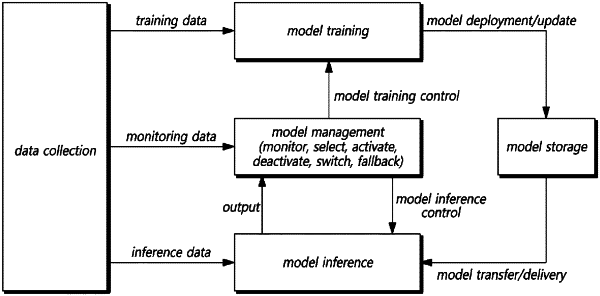| CPC H04W 24/02 (2013.01) [H04L 41/16 (2013.01)] | 18 Claims |

|
1. A method for using an artificial intelligence (AI)/machine learning (ML) model by a user equipment (UE) in a wireless communication network, the method comprising:
receiving, by the UE, activation instruction information for one AI/ML model among a plurality of AI/ML models included in the UE from a base station;
activating, by the UE, the AI/ML model among the plurality of AI/ML models based on the instruction information;
transmitting, by the UE, a response to the activation of the AI/ML model to the base station; and
obtaining, by the UE, an inference data required for a communication operation with the base station using the AI/ML model,
wherein life cycle management is performed on the AI/ML model according to at least one of a functionality-based AI/ML model classification or a model ID-based AI/ML model classification,
wherein the method further comprising receiving monitoring data from a data collection entity,
wherein the life cycle management includes:
monitoring a performance of the AI/ML model based on the inference data and the monitoring data;
determining to switch the activated AI/ML model to other AI/ML model among the plurality of models based on the performance of the AI/ML model; and
when the switching is determined, deactivating the activated AI/ML model and activating the other AI/ML model.
|